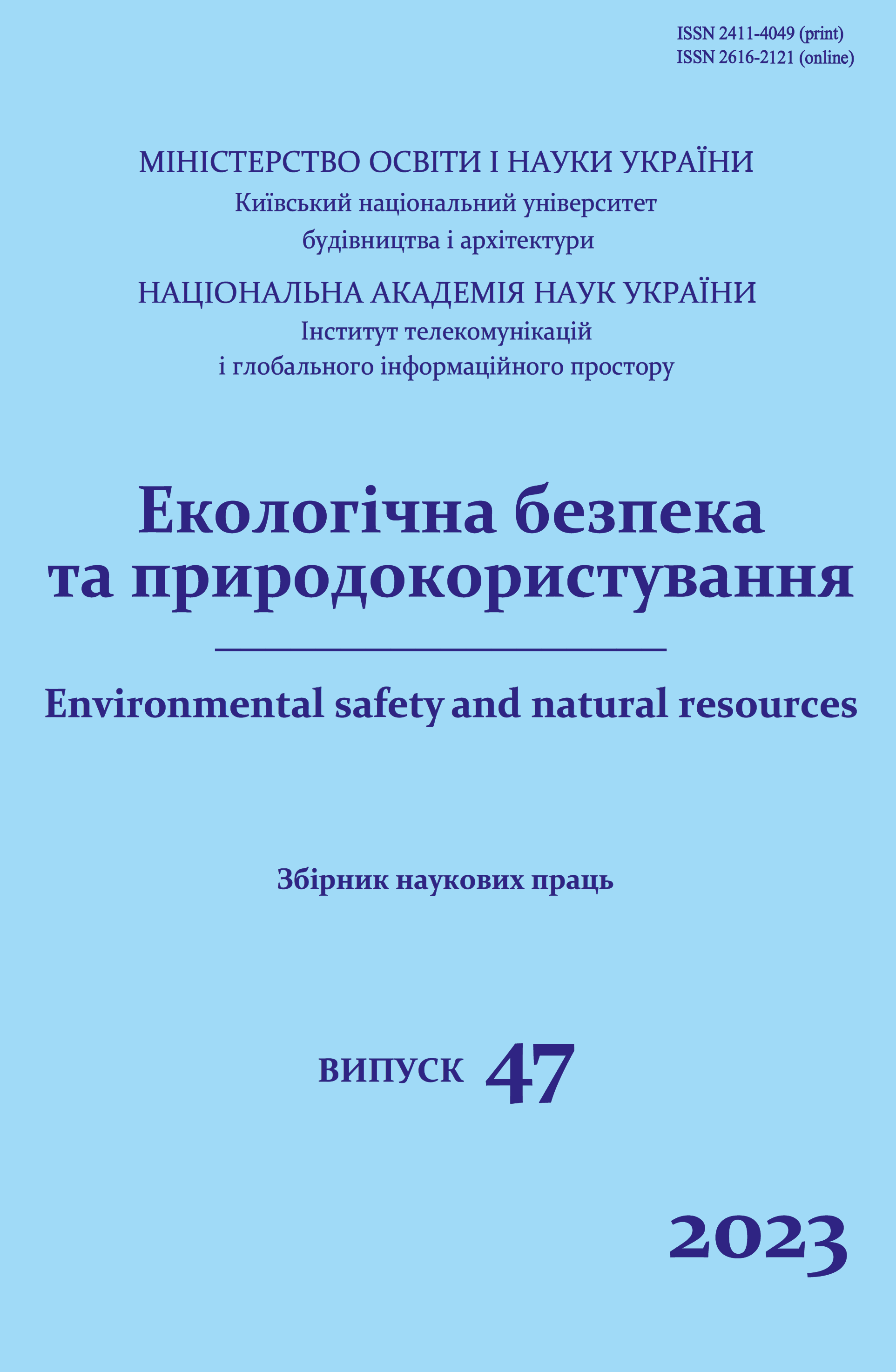An analysis of the influence of the biofilm heterogeneity on the effectiveness of organic pollution removal in bioreactors
DOI:
https://doi.org/10.32347/2411-4049.2023.3.5-20Keywords:
stratified model, biofilm, organic pollution, concentrations, treatment, effectivenessAbstract
A mathematical model of biological purification of wastewater from organic pollutants in the conditions of an aeration tank with a fixed biocenosis (biofilm of microorganisms) is presented. At the same time the peculiarities of the formation and modeling of a complex heterogeneous stratified structure of a biofilm with variable processes and parameters along its thickness are considered and taken into account on in particular the processes of mass transfer and concentration of microorganisms. It shown that the treatment processes in heterogeneous stratified biofilm are designated by the effective diffusion coefficient which is depended on the pollutions concentration. Owing to that the pollutions concentration is changing of along the biofilm thickness and increase from the surface to the biofilm bottom the decreasing of the effective diffusion coefficient is observed. On the base of the provided experimental investigations the change of the effective diffusion parameter along the biofilm thickness may be specified according to linear law. The quantity criteria of the first and zero order kinetic and Monod equation were used in the practical calculations. Ascertain that the substrate removal have a place on the early part of the biofilm which amounts to 20–25% from the its full thickness. On the base of the created biofilm model of the heterogeneous-stratified structure the comparative analysis and valuation of the different investigations of the pollutions removal during the treatment processes at using of the homogeneous and heterogeneous structure of the biofilm were treated. It was designated that the pollutions removal effectiveness depends on the biofilm features. So at the some main parameters the homogeneous and stratified biofilms indicate almost the same microbial activity and the difference depends on the effective diffusion coefficient on the biofilm output. In the dependence on the hydrodynamic conditions of the treatment processes the homogeneous biofilm activity may be lower, higher or similar one of the stratified biofilm. Heterogeneous biofilm has the lower activity near the biofilm bottom at the high values of the effectiveness coefficient than the homogeneous one at the average values of this coefficient and the substrate against of the which the microorganisms growth is depended on to penetrate more in depth in stratified biofilm than in homogeneous one.
References
Beyenal, H., & Lewandowski, Z. (2005). Modeling mass transport and microbial activity in stratified biofilms. Chemical Engin. Science, 60, 4337-4348.
Elenter, D., Milferstedt, K., Zhang, W., Hausner, M., & Morgenroth, E. (2007). Influence of detachment on substrate removal and microbial ecology in a heterotrophic/autotrophic biofilm. Nat.Resour., 41, 4657-4671.
Henze, M.M., van Loodsdresht, M., Ekama, G.A., & Brdjanovic, D. (2008). Biological Wastewater Treatment. IWA Publishing.
Lee, M.W., & Park, I.M. (2007). One-dimensional mixed-culture biofilm model considering different space occupancies of particle components. Water Res., 1-41-1-44, 4317-4328.
Oliynyk, O.Ya., Airapetian, T.S., & Kurganska, S.M. (2016). Analysis and some recommendations due calculation of the oxygene regime in aerotanks at the treatment of the waste waters with organic pollutions by the suspended and fixed biocenosis. Scient. Visnyk of Building. Kharkiv, 3(15), 177-184 [in Ukrainian].
Wanner, O., Ebert, N.I., & Rittman, B.E. (2006). Mathematical modeling of biofilms. Scientifical Technical report. №18. 208 p.
Henze, M., Harrenoes, P., Jansen, C., & Arwin, E. (2002). Wastewater Treatment. Springer: Berlin - New-York.
Oliynyk, O.Ya., Airapetian, T.S., & Kalugin, Yu.I. (2019). Modeling and calculations of the waste waters treatment in aerotanks-mixers by suspended and fixed biocenosis using of the nonlinear Monod kinetic. Scient. Visnyk of Building, Kharkiv, 3 (97), 113-122 [in Ukrainian].
Beyenal, H., & Tanyolag, A. (1994). A mathematical model for hollow biofilm reactors. Chem. Engin. Journal, 56, 853-859.
Wasche, S., Horn, H., & Hempel, D.C. (2002). Influence of growth conditions on biofilm development and mass transfer at the bulk/biofilm interface. Water.Res., 36, 4775-4784.
Downloads
Published
How to Cite
Issue
Section
License
Copyright (c) 2023 Oliynyk O.Y., Telyma S.V., Kalugin Y.I., Oliynyk Y.O.

This work is licensed under a Creative Commons Attribution 4.0 International License.
The journal «Environmental safety and natural resources» works under Creative Commons Attribution 4.0 International (CC BY 4.0).
The licensing policy is compatible with the overwhelming majority of open access and archiving policies.

